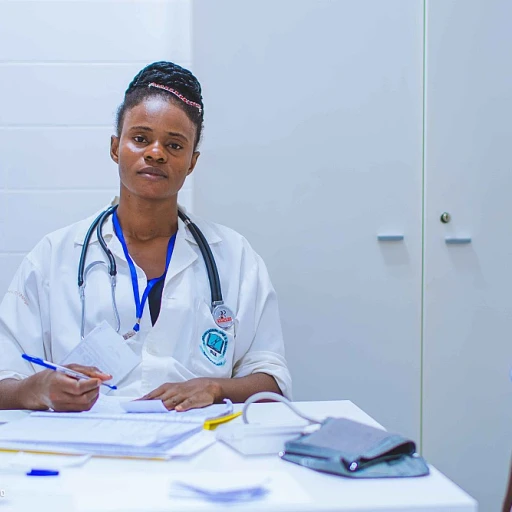
Defining Capacity in HR Analytics
Exploring the Concept of Capacity in HR Analytics
When diving into the world of HR analytics, understanding the difference between capacity and capability is crucial. Let's start with capacity, a term that often raises questions about its meaning and application in human resources. In essence, capacity refers to the maximum amount of work or output that an individual or team can handle within a given time frame. It is about the ability to manage tasks effectively, considering both physical and mental limits.
Capacity is not just about the amount of work but also the ability to sustain performance over time. It involves assessing the skill power and resources available to meet business demands. HR professionals often use analytics to measure capacity by evaluating workload distribution, employee skills, and resource allocation. This helps in identifying bottlenecks and optimizing workforce efficiency.
Understanding capacity is vital for workforce planning and strategic decision-making. It allows businesses to anticipate changes and adjust their strategies accordingly. By analyzing capacity, companies can ensure they have the right amount of resources to meet their objectives without overburdening their employees.
For those interested in a deeper dive into HR analytics concepts, exploring the differences between pro-rata and flat-rate approaches can provide further insights into managing resources effectively.
Understanding Capability in HR Analytics
Decoding Capability within Human Resources Analytical Landscape
Capability in HR Analytics refers to the inherent skills and abilities that individuals bring to their roles within an organization. While frequently confused with capacity, capability zeroes in on the personal and professional attributes of the workforce. This distinction is pivotal for businesses aiming to harness the full potential of their teams. When considering capability, it's essential to think about the types of skills present within your team. These can range from technical know-how to soft skills like problem-solving or adaptability. Understanding the difference between capacity and capability is vital, as capacity refers more to the maximum amount that can be achieved by a team, while capability reflects their skill power. Capability can be framed in terms of physical and mental abilities. The term, as per Merriam-Webster, describes the ability or power to do something, which often involves both skill and knowledge. It’s an answer to the question of what an individual or group can do, not just in regards to their current duties but what they will be able to achieve over time with training and development. Why is capability important? It provides a framework for assessing and planning personnel changes efficiently and is a sign of where your business might need to focus its resources for training and development. To explore how shifts in capability can impact employment policies and outcomes, it's helpful to understand the difference between right-to-work vs. at-will employment. Incorporating capability analytics into the HR strategy helps leaders to ask insightful questions about their teams. It’s about scrutinizing current skill sets and potential growth, aiming to understand both physical and mental capacities of individuals. Answering these questions allows businesses to fine-tune their workforce planning efforts effectively.Comparing Capacity and Capability
Exploring the Distinct Variables of Capacity and Capability
When delving into the realms of human resources analytics, it's crucial to unravel the nuanced distinction between capacity and capability. These terms are often used interchangeably in the business context, but they carry distinct meanings that, when understood, significantly impact workforce planning and management. Capacity refers to the maximum amount of work that individuals or teams can complete within a given timeframe. It encompasses both the physical and mental power to perform tasks. For instance, how much time an employee will require to finish a project, taking into account their current workload, is a reflection of their ability capacity. On the other hand, capability is about the skills and competencies an individual can bring to the table. It's not just about the maximum effort but about how effectively one's abilities can be harnessed to achieve business goals. In this light, capacity might represent an employee's bandwidth, while capabilities are more about skill power and the quality of the outputs they can produce. The difference between capacity and capability becomes more evident when considering change within an organization. Capacity changes can be quantitative—like hiring more people or allocating more time to a project. However, enhancing capabilities often involves qualitative improvement, such as training programs to elevate employees' skills. Understanding this capacity vs. capability difference is fundamental. It allows HR teams to strategically address both the quantity of work and the quality of skills available within their workforce, thus enabling better answers to workforce planning questions. To further explore how these elements drive effective HR strategies, one might want to learn about compensation insights in HR analytics, which are crucial in balancing these factors for optimal workforce productivity.The Role of Data in Measuring Capacity and Capability
The Power of Data in Assessing Workforce Dynamics
In the realm of HR analytics, data serves as the cornerstone for evaluating both capacity and capability. Understanding the difference between these two concepts is crucial for effective workforce planning. Capacity refers to the maximum amount of work that can be handled by the team, while capability is about the skills and abilities that individuals bring to the table.
To measure these effectively, HR professionals rely on a variety of data points. For capacity, metrics such as headcount, working hours, and resource allocation are essential. These data points help answer questions about the amount of work that can be managed at any given time. On the other hand, capability assessment focuses on skills and competencies, often measured through performance reviews, training outcomes, and skill assessments.
Data analytics tools can provide insights into both physical and mental capacities, as well as the capabilities of the workforce. By leveraging these tools, businesses can better understand the difference between what their teams can do and what they are doing. This understanding is vital for making informed decisions about hiring, training, and resource allocation.
Moreover, data helps in identifying gaps between current and required capabilities, allowing organizations to strategize effectively. This involves not just looking at the present but also anticipating future needs. As the business environment changes, so too must the skills and abilities of the workforce. Therefore, continuous data analysis is key to maintaining a competitive edge.
Ultimately, the role of data in measuring capacity and capability is about providing clear answers to complex questions. It helps organizations not only to understand their current workforce dynamics but also to plan strategically for the future. By doing so, businesses can ensure they have the right people with the right skills at the right time.
Strategic Implications for Workforce Planning
Strategic Workforce Planning Using Capacity and Capability Analytics
Understanding the strategic implications of capacity and capability in workforce planning is crucial for HR professionals. The distinction between these concepts is not just academic; it has real-world applications that can significantly enhance a business's HR strategy. In terms of workforce planning, capacity refers to the maximum amount of work that a team can handle at any given time. It's about assessing how many projects or tasks the team can manage without compromising efficiency or quality. Capability, on the other hand, is about the ability of individuals and teams to perform specific tasks. This involves assessing skills, mental strengths, and the ability to adapt to change over time. The difference between capacity and capability is a vital consideration. Capacity is about managing the present workload with available resources, while capability is about preparing for future challenges and development. HR analytics play a key role in measuring these aspects. By leveraging data, businesses can gain insights into current capabilities and forecast future needs. When planning strategically, HR teams should answer key questions like:- What is the current capacity of our workforce?
- Do our people have the necessary skills to meet our future goals?
- How can we improve individual and team capabilities?
- Are there signs of stress or overwork due to capacity limits?
Case Studies: Successful Integration of Capacity and Capability
Examples of Effectively Merging Capacity and Capability
In examining real-world applications of capacity and capability within human resources analytics, several businesses have showcased notable success in balancing these two elements to streamline operations and drive workforce development.Understanding the difference between capacity and capability is crucial when looking at effective models. Some businesses have expertly crafted strategies that not only assess the maximum amount of work their teams can handle (capacity) but also the mental and physical skills (capabilities) their people possess to execute efficiently.
- Tech Industry Leader: A leading tech company recently embarked on an initiative to revamp its workforce planning by deeply analyzing the individual abilities of its employees. By leveraging data analytics, they could accurately answer the question of how their current capacity compared to their aspirational capabilities. This introspection allowed them to institute targeted training programs to bridge the skill gaps, thereby enhancing both their capacity and capability.
- Retail Giant: In the retail sector, one giant integrated capacity analytics with its hiring process, ensuring that the maximum capacity of tasks aligns with the capabilities of new hires. This approach significantly diminished turnover rates, as the business meticulously ensured that employees' mental strength matched the demands of their roles, which was carefully defined by HR using analytics tools.
- Healthcare Provider: A significant healthcare entity successfully used HR analytics to evaluate the difference between staffing capacity and on-the-ground capabilities. The insights obtained led to systemic changes in how shifts were scheduled, improving service delivery times and patient satisfaction immensely.
These examples illustrate that understanding the capacity difference and capability differences, defining the question, and using analytics to answer it, can pave the way for more efficient business operations. As we continue to evolve our understanding of these concepts, the strategic implications for workforce planning are truly profound, impacting both individuals and the broader organization.













